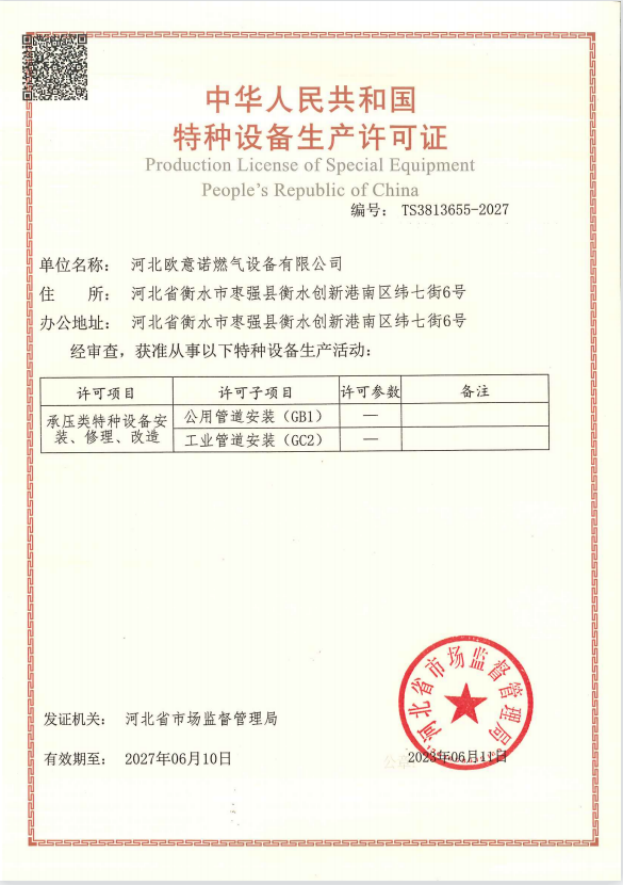
Nov . 20, 2024 05:41
Back to list
gas coalescer
Understanding Gas Coalescers Principles and Applications
Gas coalescers play a pivotal role in various industrial processes, particularly in the oil and gas sector. They are critical for the efficient separation of liquid droplets from gas streams, ensuring that the gas product is clean, dry, and compliant with quality standards. This article delves into the operating principles of gas coalescers, their types, applications, and benefits.
Operating Principles
The primary function of a gas coalescer is to remove liquid contaminants, such as water, hydrocarbons, and other impurities, from a gas stream. The process involves the coalescence of tiny liquid droplets into larger ones, which can then be easily separated from the gas. Gas coalescers typically employ a combination of filtration mechanisms, gravitational settling, and the principles of surface tension.
In a gas coalescer, the gas stream is passed through a filter element, which has a designed surface area to facilitate the collection of liquid droplets. As the gas flows through the filter, small droplets adhere to the filter medium and gradually combine to form larger droplets. The larger droplets, being heavier, move towards the bottom of the coalescer due to gravity and are subsequently drained off, allowing the purified gas to exit from the top.
Types of Gas Coalescers
Gas coalescers are categorized based on their design and operational characteristics. The two main types are
1. Inline Coalescers These systems are typically designed to integrate into existing piping systems. They are compact and effective for moderate flow rates and contaminants. Inline coalescers are often used in applications where space is at a premium.
2. Horizontal and Vertical Coalescers These are larger units designed for higher flow rates and volumes of liquid. Horizontal coalescers facilitate gravity separation by providing a larger surface area for liquid accumulation, while vertical designs can be more efficient in certain operational scenarios.
Applications
Gas coalescers find applications in numerous industries, including
- Oil and Gas They are used in refineries and gas processing facilities to remove water and liquid hydrocarbons from natural gas streams before transportation or storage.
gas coalescer

- Petrochemical Industry In the production of chemicals, gas coalescers remove impurities that could adversely affect the final product quality.
- Air and Gas Filtration Coalescers are employed in compressed air systems and gas compressors to provide clean gas for various processes.
- Environmental Control They are used in systems designed to minimize environmental pollution by effectively filtering out harmful liquid contaminants.
Benefits
The use of gas coalescers offers several advantages
- Enhanced Process Efficiency By removing liquid contaminants, gas coalescers prevent equipment fouling and corrosion, thereby extending the lifespan of process equipment.
- Improved Product Quality Coalescers help maintain the quality of gas products, ensuring compliance with industry standards and reducing the risk of downstream processing issues.
- Cost-Effective The reduction in equipment maintenance and the potential for improved process efficiency translate into cost savings over time.
- Environmental Compliance Gas coalescers aid companies in meeting regulatory requirements related to emissions and waste management.
Conclusion
Gas coalescers are essential components in many industrial systems, particularly within the oil and gas sector. By effectively removing liquid contaminants from gas streams, they enhance operational efficiency, improve product quality, and promote environmental compliance. As industries continue to prioritize efficiency and sustainability, the role of gas coalescers will undoubtedly remain significant, ensuring that processes are not only effective but also environmentally responsible. Understanding their operating principles and applications is crucial for engineers and operators working in relevant fields.
Next:
Latest news
-
Safety Valve Spring-Loaded Design Overpressure ProtectionNewsJul.25,2025
-
Precision Voltage Regulator AC5 Accuracy Grade PerformanceNewsJul.25,2025
-
Natural Gas Pressure Regulating Skid Industrial Pipeline ApplicationsNewsJul.25,2025
-
Natural Gas Filter Stainless Steel Mesh Element DesignNewsJul.25,2025
-
Gas Pressure Regulator Valve Direct-Acting Spring-Loaded DesignNewsJul.25,2025
-
Decompression Equipment Multi-Stage Heat Exchange System DesignNewsJul.25,2025

